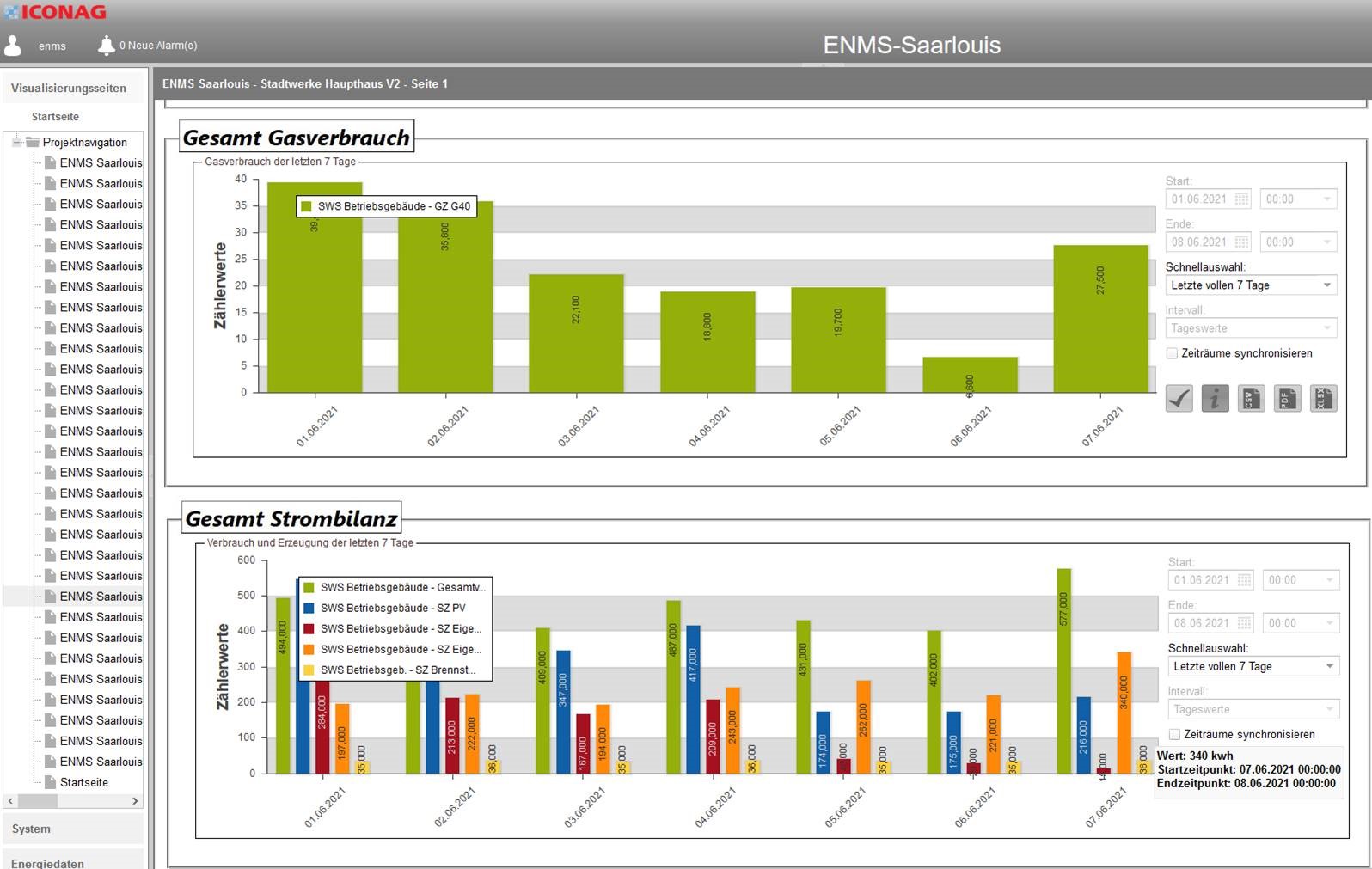am 06.08.2021 - 11:11 Uhr
In the operation of functional buildings, energy has many forms of existence: Heat, water, gas, air conditioning, compressed air and, of course, electricity want to be used efficiently, sustainably and cost-savingly and thus offer enormous potential for economic operation. In order to make the most of this potential, the introduction of an efficient energy management system (EnMS) is essential and even required by law from a certain company size. This applies to companies with more than 250 employees and annual sales of more than 50 million euros or total assets of more than 43 million euros.
Up to now, energy monitoring (the recording, processing and visualization of consumption) and energy controlling (the continuous observation of the recorded data including the derivation of measures) were seen as independent of the building management system (BMS), since they are not components of the building automation system.
Today, technical developments and the rapidly growing possibilities of networking make it possible to integrate both in one system and thus to handle the detection of excess consumption, the analysis of errors (e.g., due to defective or incorrectly set equipment), and the subsequent correction or repair via a user-friendly system.

By networking the individual meters of a building, a modern building management system with integrated energy management system such as B-CON not only allows central recording and monitoring, but also the performance of various analyses in a single system.
For example, several properties can be compared directly with each other or evaluated on a seasonally weather-adjusted basis. An integrated tool supports with a top-down analysis the quick identification of weak points such as open fresh air dampers or the fast detection of leakages or incorrectly adjusted systems.
In this way, energy-relevant factors in building operation such as temperature specifications, system parameters, operating times, window and door positions as well as major energy consumers can be monitored, controlled and corrected directly via the system using a uniform user interface (browser-based).
"The goal is maximum transparency of system statuses and malfunction statistics," says Daniel Rörich, Technical Sales at ICONAG-Leittechnik GmbH. "Only through the permanent collection and consolidation of all data can effective measures be derived quickly if necessary and more efficient energy management implemented."
However, the monetary and energy-related savings potential is not the only benefit that results from the use of an integrated energy management system (EnMS). It has a positive impact on the operator's image and helps meet investor specifications, such as complying with energy efficiency classes or achieving LEED certification from the U.S. Green Building Council.
From a marketing point of view, there are also clearly measurable advantages to such a system, for example in terms of the indoor climate in retail stores, shopping malls and hypermarkets.
It is no longer a secret that a pleasant indoor climate has a direct and positive effect on merchandise sales. If this is achieved with optimal energy use, the return on investment improves.
In addition to retail, other industries benefit from the introduction of an energy management system integrated into the building management system (BMS). Manufacturing companies strengthen their competitiveness and, under certain conditions, can benefit from subsidies and tax breaks.
In data centers, the use of such a system is particularly interesting. High energy costs are incurred due to operation and cooling, and failures in building technology often go hand in hand with risks for operations.
Regardless of the industry and the building, the greatest benefit of an energy management system integrated into the building control system lies in the permanent and cross-property recording and evaluation of consumption data as well as the rapid detection of errors and the resulting gain in time for taking derivative measures.
Only if this integration is guaranteed can cost reduction potentials be reliably revealed and measures to increase efficiency and optimize building operation be taken immediately. Measurable benefits from which more and more building operators are profiting.
Daniel Rörich: "We constantly receive feedback from various industries that are successfully using B-CON. Here, our product is particularly praised for its practical orientation and ease of use.
Powered by ModuleStudio 1.3.2